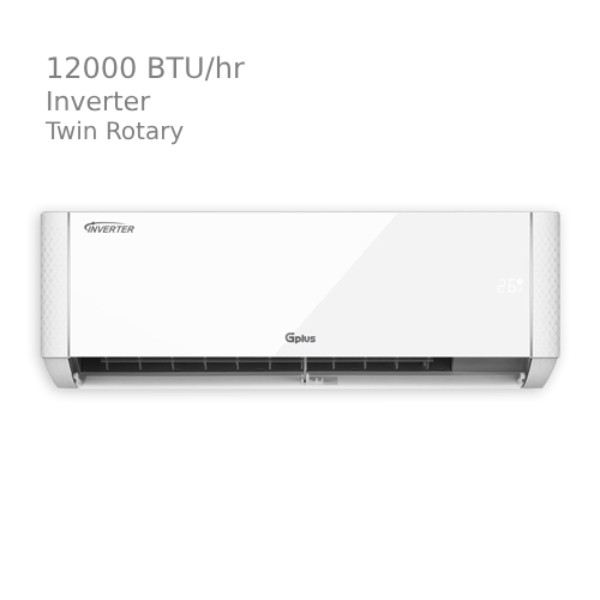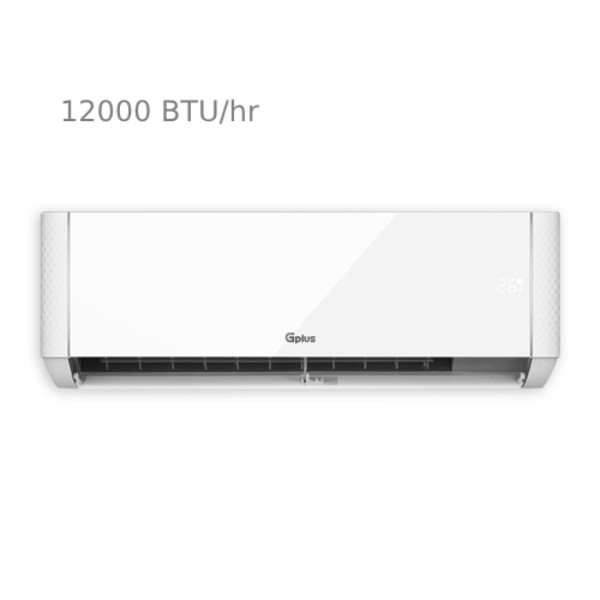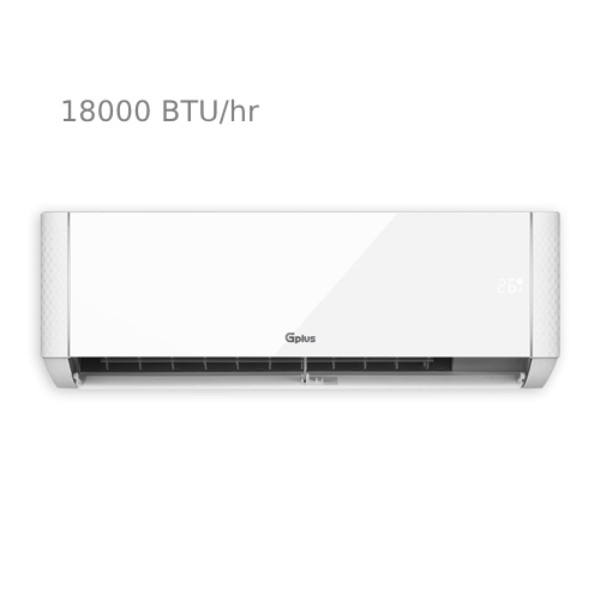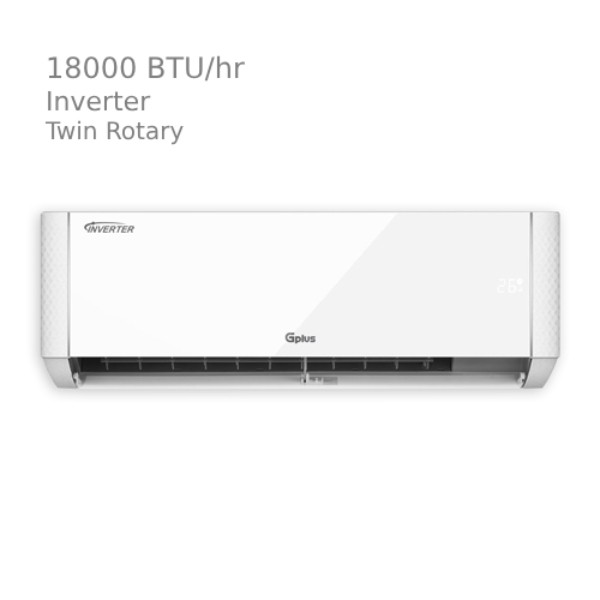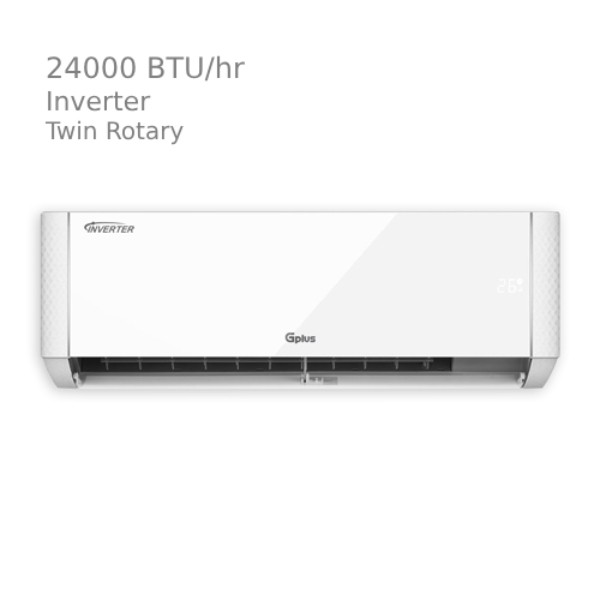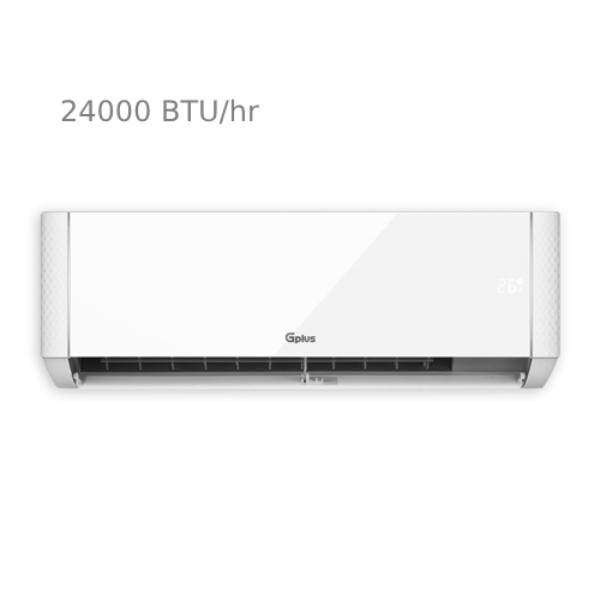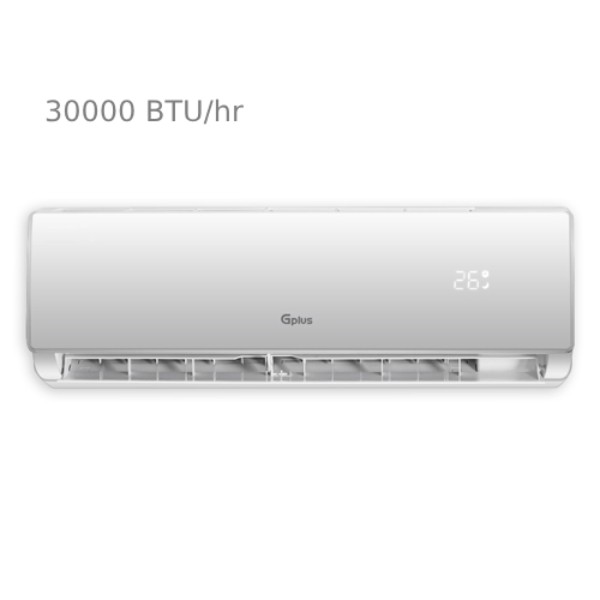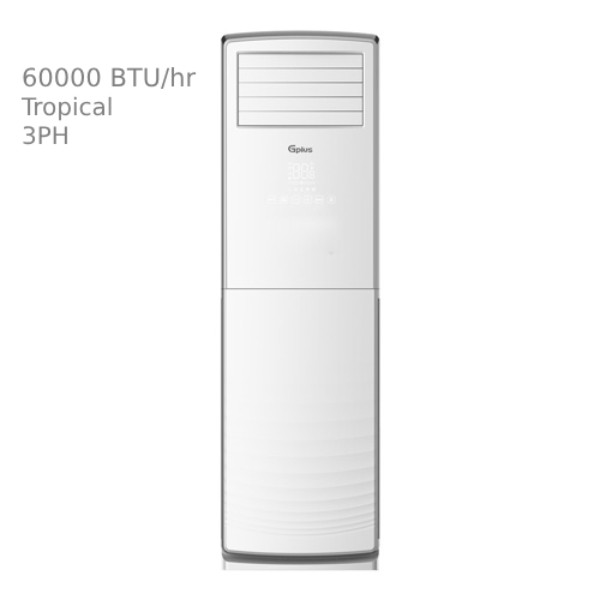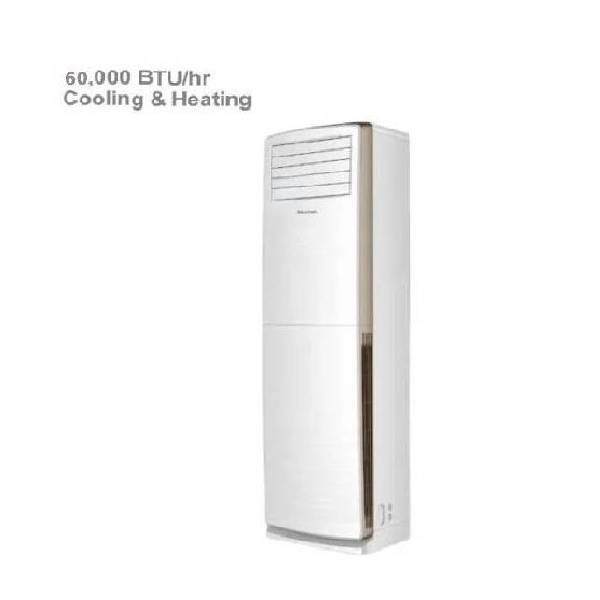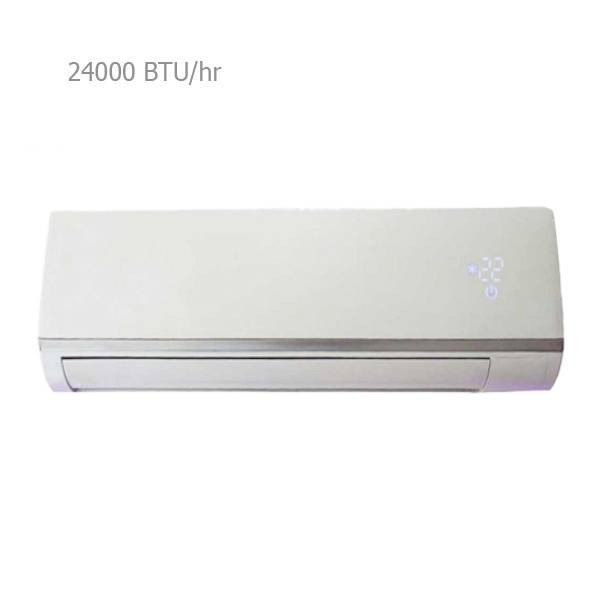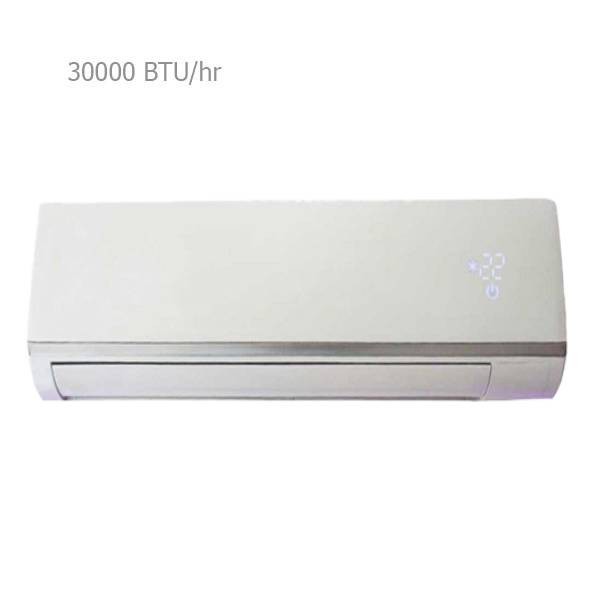AC / Split AC Unit
To select and buy ACs and/or Split ACs, we need information such as the capacity calculation, model, popular brands, and their prices. The following content provides a comprehensive buying guide and the best price for various types of ACs and Split AC Units with a warranty and free installation.
Air Conditioner and Split AC Expert Buying Guide and Price List
Air conditioners are among the most important and widely used equipment used today for cooling and heating in homes and workplaces.
Air conditioning means controlling and regulating temperature and humidity, along with reducing dust and suspended particles in the ambient air, which is achieved by choosing the right air conditioners in terms of type, capacity, additional features, brand, energy consumption, etc.
In the following, we will discuss how to examine each of those factors to make a good and excellent choice regarding the provision of the right air conditioner for your home or workplace.
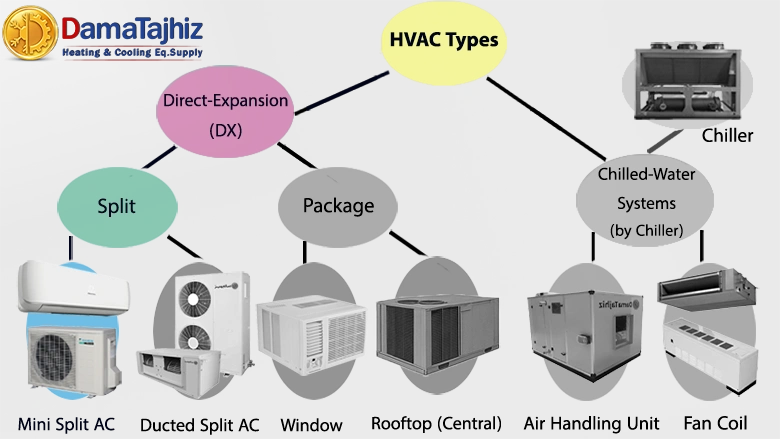
Review, Selection, and Pricing of HVAC Equipment
9 Factors to Consider When Choosing ACs / Split ACs
The first step in buying an air conditioner is to pay attention to the dimensions of the environment, the ceiling height of the installation location, and the appropriate cooling capacity of the air conditioner.
Because as you know, air conditioners are produced and supplied in different types with different cooling, heating, and ventilation capacities, and before buying an air conditioner, you must first consider the area and use of your desired environment, so that you can make the right choice in the model and cooling capacity of the device, at a reasonable price.
Then, things such as the type of air conditioner, single-phase or three-phase electricity (based on the capacity of the device), features, energy consumption, brand, and benefits of the relevant air conditioner should also be examined.
When selecting and buying a suitable air conditioner, you should consider the following parameters:
- BTU or cooling capacity of the AC based on the dimensions of the environment, location, use, and geographical conditions.
- Type of air conditioner (wall-mounted, window, portable, standing, etc.).
- Energy consumption (A++, A+++, etc.).
- Air conditioner brand that suits your needs.
- Panel size and the design of the AC.
- Heating performance (if required).
- Type of compressor (rotary, piston, scroll including; T1, T2, T3)
- Sound level of the internal panel (dB).
- Your budget and the price of the AC.
In the following, we will examine these parameters in detail so that you can make the best choice in purchasing the right air conditioner for your needs.
DamaTajhiz: Thousands of products for thousands of projects (since 2004)
AC / Split AC Unit Capacity Calculation and the Concept of BTU
Another factor that should be considered when choosing AC/Split AC units is their capacity, measured in BTU standard; for example, an 18000 BTU AC unit.
BTU (British Thermal Unit) is the standard unit for measuring heat energy in air conditioning equipment, which is standardly defined as the amount of heat that can increase by 1°F of one pound of water at one atmosphere pressure. (For example; from 60°F to 61°F).
AC / Split AC Unit Approximate Capacity Calculation
To calculate the approximate capacity of the proper split AC unit consider about 400 to 600 BTU, per square meter on the middle floor of the building. For the floors under the rooftop, about 600 to 800 BTU per square meter of the infrastructure (due to the direct sunlight on the rooftop) in hot and non-tropical weather conditions such as:
- Saudi Arabia: Yanbu, Jeddah, Mecca, Al Wajh, Al Hufuf, Unayzah, Buraydah
- Lebanon: Baslouqit, Bdebba, Baddouaa, Abu Saad, Aassoun, Deir Janine, Halba, Hakour, Haizouq
- Yemen: Ayn Milh, Tarim, Ard al Huwayl, Ard as Suqayr, Bayt al Mudir, Al Ma'shur
- Iraq: Amarah, Nasiriya, Kut, Kerbela, Semawa, Badrah, Rafaei
- United Arab Emirates - UAE: Dubai, Difan, Bida, Ghayl, Uwaynat, Ar Rafa'ah, Lazimah, Adh Dhayd, Layyah
- Qatar: Duha, Al Rayyan, Al Daayen, Al Wakrah
- Kuwait: Jahra, Sulaibiya, Al Wafra, Abdaly, Sabriyah
- Syria: Deir ez-Zor, Al Raqqah, Al Hasakah, Hama, Daraa, Aleppo, Homs, Idlib
- Turkey: Cizre, Urfa, Batman, Siirt, Izmir, Adana, Amasya, Istanbul
- Azerbaijan: Saatly, Sabirabad, Zerdab, Imishli, Beilagan
- Armenia: Armavil, Aragatsotn, Yerevan, Syunik, Tavush, Ararat, Kotayk, Lori
For example: A 9,000 BTU split for a 12-meter room, 12,000 BTU split for a 17-meter area, 18,000 BTU split for a 25-meter area, 24,000 BTU split for a 40-meter hallway, and 32,000 BTU split for a 45-meters hallway.
You can also refer to the pre-calculated table below or use the DamaTajhiz capacity calculation web-app to see the approximate calculation and determination of the capacity, relative to the area of the environment in moderate weather.
| Capacity (BTU) | Under the Roof Units (m2) | Other Floor Units (m2) |
|---|---|---|
| 9000 | Up to 12 | Up to 15 |
| 12000 | Up to 17 | Up to 22 |
| 18000 | Up to 25 | Up to 35 |
| 24000 | Up to 34 | Up to 45 |
| 32000 | Up to 45 | Up to 64 |
| 45000 standing | Up to 55 | Up to 75 |
| 60000 standing | Up to 75 | Up to 100 |
| 90000 standing | Up to 110 | Up to 150 |
Also consider about 20-30% higher than the above table for hot-dry climate cities such as:
- Saudi Arabia: Turaif, Sakaka, Abha, Rafha, Riyadh, Arar
- Lebanon: Baalbek-Hermel, Beqaa, Nabatieh, Akkar, Ain Dara, Beirut
- Yemen: Sa'dah, Dhamar, San'a, Al Mahwit, Al Jawf, Ma'rib, Shabwah
- Iraq: Sulaymaniyah, Dokuk, Nineveh, Kirkul, Saladin, Anbar, Muthanna, Babil,
- United Arab Emirates - UAE: Al Quwain, Al Khaimah, Fujairah, Ajman, Sharjah
- Qatar: Umm Salal, Al Shamal
- Kuwait: Farwaniya, Al Asimah, Hawalli, Ahmadi, Mubarak Al-Kabeer
- Syria: Damascus, As-Suwayda, Quneitra
- Turkey: Erzurum, Ardahan, Erzincan, Agri, Bayburt, Kars, Karabut, Kastamonu, Bingol, Hakkari, Van, Samsun, Bursa
- Azerbaijan: Kelbajar, Balaken, Gabala, Zagatala, Gahk, Shamkir, Sheki, Oghuz
- Armenia: Vayots Dzor, Shirak, Gegharkunik
Based on the temperature conditions of the desired location, contact one of our HVAC experts at DamaTajhiz Customer Service to choose the right AC unit with tropical compressors and condensers, Gold Fin, or Blue Fin evaporators.

DamaTajhiz; Guide to Selection and Pricing of HVAC and Building Facilities Equipment (Since 2004)
Air Conditioner Brand Comparison
Now we come to the next important parameter in choosing and buying an air conditioner, which is the comparison of the air conditioner brands. These brands are very popular in Middle East and can offer different choices in terms of quality and specific features.
| Brand of Air Conditioner and Split | Features | Advantages | Disadvantages |
|---|---|---|---|
| Hisense | Hisense is a Chinese brand known for its reasonable price and acceptable quality in air conditioners. Some models use inverter technology to reduce energy consumption. | Affordable price, diverse capacity and features, low energy consumption, modern design. | Build quality may be average compared to some other brands. |
| LG | LG air conditioners generally use modern technologies like Dual Inverter compressors, advanced air filters, and smart features. | High build quality, stylish design, optimized energy consumption, excellent after-sales service, quiet operation. | Higher price compared to other brands. |
| Green | Green is a Chinese brand known for producing quality air conditioners at affordable prices in Iran. It uses rotary and piston compressors in some models. | Affordable price, good performance in various weather conditions, simple and practical design. | Technology may be slightly behind compared to larger brands like smart air conditioners. |
| GPlus | GPlus is a subsidiary of the Goldiran company. This brand is particularly known for affordable home appliances and air conditioners. | Affordable price, practical features, suitable design for Iranian spaces. | Build quality may be lower compared to prominent international brands like LG or Samsung. |
| Gree | Gree is one of the leading brands in the air conditioner industry, especially popular in Asia and the Middle East. It uses advanced technologies and inverter compressors in its air conditioners. | High quality, low energy consumption, suitable design, excellent performance in high temperature areas. | Relatively high price. |
| Zanetti | Zanetti is a Chinese brand that produces air conditioners, HVAC systems, and cooling systems. It is known for its quality and affordable products. | Beautiful design, excellent performance, advanced technologies. | Affordable price compared to other similar brands. |
| Iran Radiator | Iran Radiator is a well-known Iranian brand in the field of HVAC equipment. Their air conditioners have good quality. | Affordable price, design and performance suited to Iran's climate, good after-sales service. | May be a bit behind international brands in terms of technology and innovation. |
| Ogeneral | Ogeneral is a Japanese brand known for its high quality and excellent performance in HVAC systems. Their air conditioners are particularly efficient in tropical areas with low energy consumption. | High build quality, modern technologies, long-lasting, strong after-sales service. | High price, sometimes after-sales service may be limited in some regions. |
| Samsung | Samsung is one of the largest technology brands in the world, and its air conditioners are known for smart features and stylish designs. The brand uses advanced technologies like digital inverter compressors and advanced air filters. | Modern design, low energy consumption, high build quality, smart features. | High price. |
| Tech Electric | Tech Electric is an Iranian brand that produces air conditioners and HVAC equipment. It is known for its acceptable quality and affordable prices in Iran. | Affordable price, good after-sales service in Iran, simple and practical design. | May lag behind larger brands in terms of advanced features like smart systems. |
| Trust | Trust is a reputable Chinese brand that has been active in Iran for years, competing alongside other brands with good quality. | Good design, solid build quality, low energy consumption. | Limited after-sales service. |
Main Factors in Choosing Air Conditioner Brand
To choose the right brand of air conditioner, examine the following factors:
- Type: Wall-mounted, window, portable, standing, ceiling, etc.
- Capacity: Choosing the right capacity based on the area, location, weather conditions, and use of the desired space.
- Energy Consumption: Brands that use inverter or dual inverter compressors consume less energy.
- Build Quality: Brands such as General, Daikin, LG, Green, Hisense, Gray, G+, Trust, Samsung, and Iran Radiator are better known for their high build quality and greater credibility.
- After-Sales Service: Big brands such as LG, Hisense, G+, Iran Radiator, and Green have good, extensive, and reliable after-sales service.
- Price: Brands like LG, Samsung, General, Gray, Mitsubishi, and Daikin have higher quality, more features, and a higher price.
- Additional Features: Some brands have smart features like motion sensors, heating mode operation, lower noise levels, more beautiful designs, WiFi, and lower power consumption, which can be a good choice for people who are more interested in these features.
With this information, you can make a more informed decision in choosing an air conditioner that suits your needs and budget.
Types of Air Conditioning Units
Air conditioners are usually divided into four main categories: window AC units, portable AC units, wall-mounted split AC units, and regular split AC units, which are further discussed in the following:
Window Air Conditioner
The window air conditioning unit is the simplest type, which has always been designed and manufactured as a box. This means the compressor and the control panel are placed together in a single piece.
These air conditioning units have a compact design and are often installed on the room window, and you must have seen them many times. This is why they are called window air conditioners. Installing a window air conditioner is very simple.
All you need to do is determine its location and prepare the place for installation, and after placing the window air conditioner in the designated place, connect the unit's plug to the electrical outlet.
As you may be aware, the window air conditioner unit needs access to the outside environment to push the hot air out of the back of the unit. Window air conditioners are usually manufactured and supplied in capacities from 9000 to 24000 and are best used in environments of less than 50 square meters.
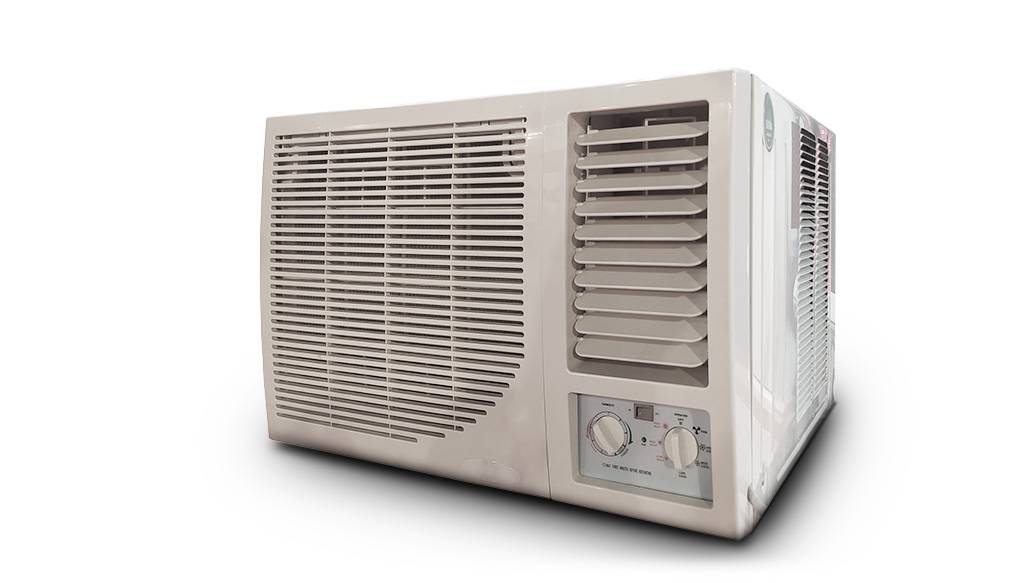
Portable Air Conditioner
A portable split AC unit is an all-in-one device like a window split AC unit. As the name refers, these ACs are portable and not attached to the wall or ceiling.
In some cases, they have wheels, making moving them around easier. Small portable split AC units suit small environments such as bedrooms, offices, and small shops. Medium portable split AC units are suitable for commercial offices and medium-sized rooms.
Portable split AC units are placed on the ground, and setting them up does not require special skills as it is done by connecting a single-phase electric cord to it and directing a flexible pipe with a diameter of 15 cm outside, which takes the ambient heat out from the back of the device.
Portable split AC units are made in single-pipe and double-pipe exhaust. In addition to removing heat from the environment, double tubes replace fresh air, which is cheaper than single-exhaust ones.
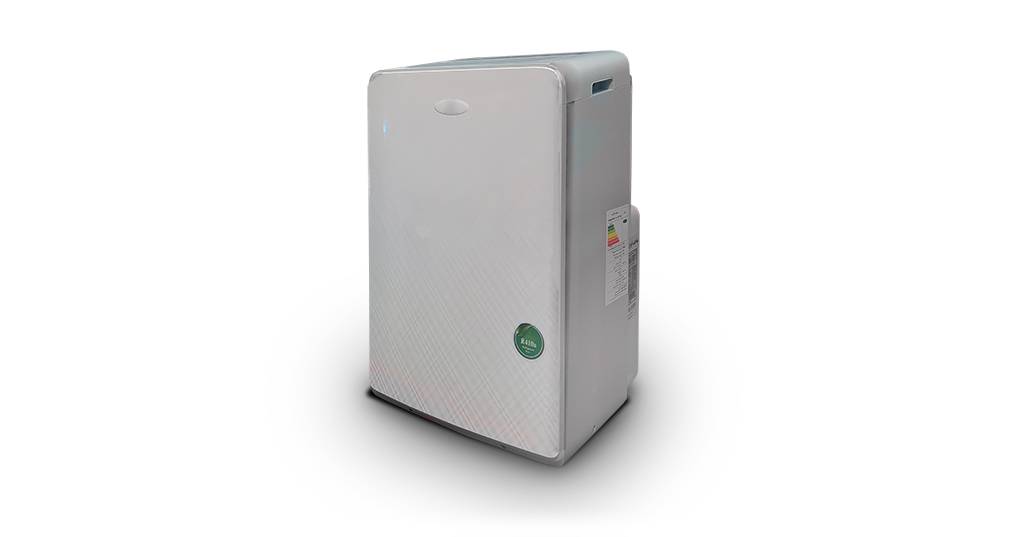
Split Air Conditioner
In general, the main function of air conditioners, as one of the types of HVAC systems, is to cool places such as residential houses, villas, offices, shops, etc., with relatively small useful areas. The new generation of these air conditioners, with higher efficiency and more beautiful appearance, are called split air conditioners or wall-mounted splits, among the most popular and best-selling air conditioners.
These units consist of two parts: the indoor and outdoor units. The indoor unit is installed inside the home (in the rooms), and the outdoor unit is installed and placed on the terrace or roof. The connection between these two parts is made by two copper pipes, flow, and return, which are fully insulated.
The operation of these units is such that cool and comfortable air enters the rooms through the indoor unit so that the heat inside the building (from different rooms) is absorbed by the refrigeration cycle in the indoor unit. Then, the refrigerant gas enters the outdoor unit through the compressor and transfers this heat to the outside environment by circulating in the condenser.
Notes:
- The allowed length of the copper pipes connecting the inner and outer panels of air conditioners in different capacities is between 6 and 20 meters.
- The smaller the capacity of the air conditioner, the shorter the copper pipe length, and the larger the air conditioner and the more powerful its compressor, the greater the length of the pipes connecting the two panels (up to about 20 meters in capacities of 30,000).
- Using a piping length longer than the allowed size between the inner and outer panels causes a decrease in efficiency, cooling, and also a decrease in the life of the device.
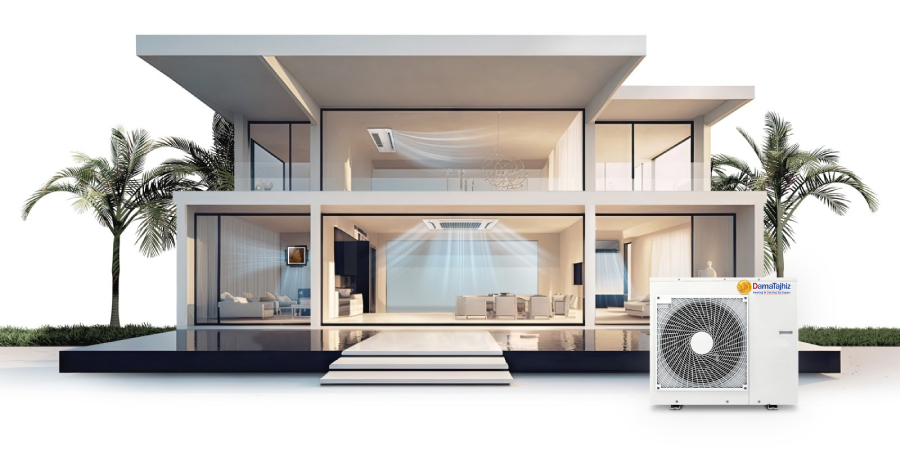
Wall-Mounting Air Conditioner
These types of ACs consist of two units, an internal and an external unit. The external unit consists of a compressor and a condenser installed outside the building. The indoor unit (evaporator) is placed inside, mainly on the wall. Two copper pipes connect these two units.
Wall split ACs are the most popular type of AC due to their greater efficiency and effectiveness, with the possibility of providing simultaneous cooling, heating, and low noise (due to the compressor being installed outside the building). Wall split AC units are produced and supplied in capacities of 9000 up to 32000. It should be noted that the best type of split AC units of 18,000 and higher are new inverters or low-consumption coolers.
Standing AC Units
A standing split AC unit consists of two internal units (like wall split AC units), the evaporator, and external units (compressor and condenser) connected through a copper pipe and perform cooling and heating operations.
These two products differ in the installation steps and the indoor unit's location, which is placed on the floor. Standing split AC units are used in places such as halls, mosques, stores, large restaurants, banks, and environments that have large areas. Standing splits are usually manufactured and supplied in various capacities, from 45,000 to 90,000 (BUT/Hr).
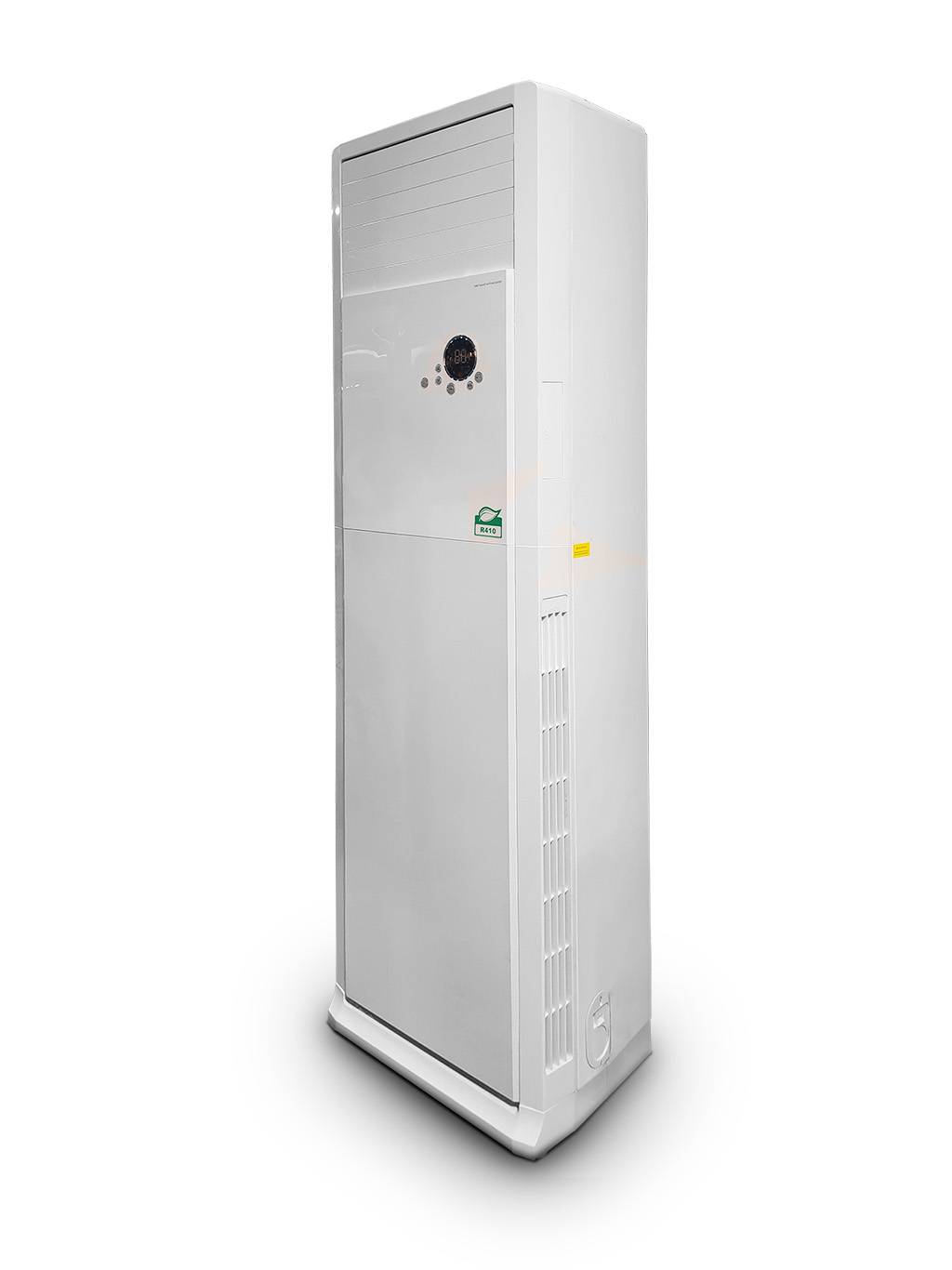
Note: When buying a standing split AC unit, in addition to the capacity and dimensions of the internal panel and external condenser of the device, you should also pay attention to the type of electricity consumption required (single phase or 3 phases).
Ceiling Air Conditioner (Cassette AC)
The ceiling split AC, which is also known as the Cassette AC, is one of the newest, most luxurious, and most widely used air conditioning equipment, which is produced and supplied in different capacities between 18000BTU/hr and 60000BTU/hr.
Cassette split air conditioners, like other types of split air conditioners, consist of two parts, an internal unit and an external unit, whose internal panel is installed inside the false ceiling of the hall, lobby, etc.
Ceiling splits AC units are produced and supplied with and/or without inverters and are used to provide cooling and heating systems in various places such as hotel lobbies, conference rooms, arcades, commercial centers, corridors of apartments, etc. Also, the electricity consumed by these splits ACs is of single-phase type up to 36000BTU/hr capacity, and in higher capacities, it is usually of three-phase type.
Among the advantages of cassette split air conditioners, we can point out that they do not occupy space on the wall and floor (during installation) and have the ability to evenly distribute air in different directions.
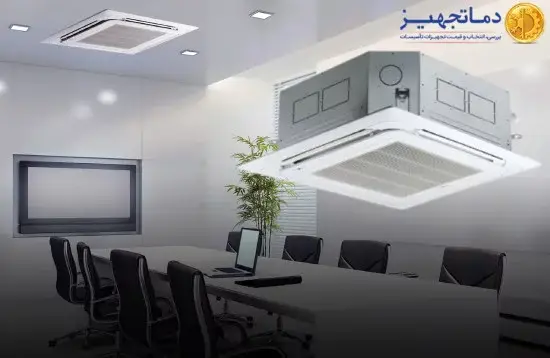
Allowed Distance Between the Indoor Panel and the Outdoor Unit in Split ACs
When choosing a split AC unit, regardless of the type or the brand, you need to pay attention to the distance between the internal panel that is placed indoors (either horizontal or vertical), the external unit (condenser), in addition to the diameters of the place, and the required AC capacity.
Suppose the total length of the connecting pipes between the internal panel and the external unit exceeds the specified value (for each air conditioner capacity). In that case, it will result in a sharp decrease in the efficiency and performance of the device. For example:
- In 9000 C split AC units, the permissible length of the connecting pipes between the indoor panel and the outdoor unit is about 6 meters.
- In 12000 C units, about 10 meters.
- In 18000 C units, the permissible length is about 12 meters
- In 24000 C units, about 15 meters.
- In 32000 C units, the permissible length of the connecting pipes between the indoor and outdoor units is about 18 meters.
- In 40,000 to 90,000 C units, the proper length of the connection pipes between the vertical internal panel and the external condenser of the device is about 20 to 25 meters.
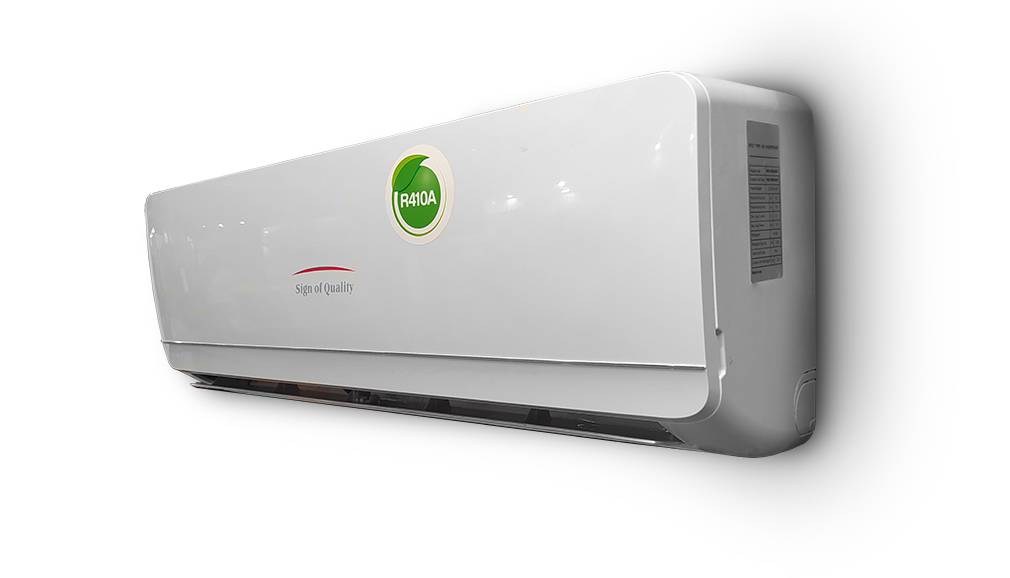
Types of ACs Based on Geographical Location and Weather Conditions
In general, split AC units are divided into three main groups of weather conditions, each of which can perform better in certain geographical conditions and meet the needs of consumers:
Moderate-class split AC unit
These split AC units, known as T1 splits, can be used in the climate of Iran, such as the central and northern regions of Iran. These ACs can perform best at temperatures between 18 and 43 degrees Celsius.
Cold-class split AC unit
These split AC units, also known as T2 splits, are suitable for cold areas such as Tabriz, Sanandaj, Yerevan, Ankara, Samarkand, Ashgabat, etc. T2 splits are the best and most efficient for temperatures 10 to 35 degrees Celsius.
Tropical-class split AC unit
Tropical split AC units, AKA T3 splits, are used in scorching and humid areas (such as the southern regions of Iran or the cities of Ahvaz, Abadan, Bandar Abbas, Chabahar, Dubai, Muscat, Doha, Sharjah, Basra, Baghdad, Abu Dhabi, Sanaa, Etc.) And can drop the temperature to the desired conditions. These splits can perform well in high temperatures from 21 to 57 degrees Celsius.
Features of Tropical Air Conditioners
Tropical wall-mounted ACs, or tropical split AC units, have unique features compared to regular split AC units, which are as follows:
- The most obvious feature of a tropical split AC unit is its compressor type. The compressor of these split AC units works in a way that performs very well despite the high temperature of the air outside. Generally, scroll or piston compressors are used in this type of split AC unit.
- Tropical split AC units (tropical wall splits) are generally equipped with inverter system technology to increase the lifespan of the device's compressor and prevent the increase in electricity consumption in these tropical regions. In the case of devices' slow service and basic maintenance, the high durability and longevity of the devices equipped with the inverter system will not have any extra cost for the buyers for many years.
- Evaporator and condenser coils in tropical split AC units are usually Blue Fin or Gold Fin. There is always a lot of acid salt in the air and rainwater in these areas (very hot and humid). Moisture and salts can accumulate on the coil's surface and negatively affect the split AC unit's overall performance (including the possibility of gas coils). Evaporator and condenser coils being equipped with Blue Fin or Gold Fin epoxy coating prevents the accumulation of acid salt and moisture on the coil.
- Although this AC is designed and built for temperatures of 21 to 57 degrees Celsius, it can also be used in temperate regions.
- All 3 types of compressors manufacture split AC units; only piston and scroll compressors are used in thermal split AC units, and the rotary compressor does not have this capability.
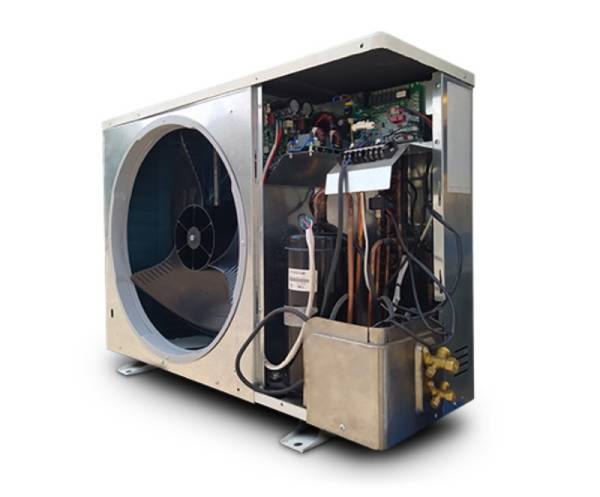
The picture shows the internal components of the condenser (outdoor unit).
The Advantages of Buying an Iranian Air Conditioner
Buying an Iranian air conditioner also has its advantages, some of which are mentioned below:
- Affordable and Economical Price: One of the most important advantages of buying an Iranian air conditioner is its affordable price. Some Iranian air conditioners compete with the best brands in terms of price and are considered a good option for buyers who are looking for an economical purchase.
- Support and After-Sales Service: Another advantage of buying an Iranian air conditioner is the existence of a wide network of authorized after-sales services such as G Plus and Iran Radiator. This means ensuring easy access to repair and maintenance services after purchase across the Middle East.
- Efficient Energy Consumption: Some Iranian air conditioners have technologies such as inverter compressors. This means reducing electricity costs.
- Quality of Construction: Given the industrial developments in Iran, air conditioners manufactured in Iran have also achieved appropriate quality. Some of them have international standards such as the European CE standard, which indicates the high quality of the product.
- Diverse Products and Options: Given the competition in the market, Iranian companies offer a variety of products with different capabilities and features. You can choose the right air conditioner for your needs that suits your budget the most.
Air Conditioner Installation Conditions
To learn more about the installation conditions of air conditioners, please pay attention to the following points:
- Choosing a Suitable Location: The air conditioner should be installed in a place away from direct sunlight and heat sources. Installing it in a closed or hot space can reduce the efficiency of the device.
- Appropriate Height of the Outdoor Unit: The outdoor unit of the air conditioner should be installed at an appropriate height to prevent blockage of the pipes and reduced performance.
- Appropriate Electrical Connection: The device must be connected to electricity with the appropriate voltage (single-phase or three-phase) to prevent possible hazards.
- Length and Arrangement of Connecting Pipes: The pipes must be installed correctly and with minimal bending to prevent pressure loss and energy consumption. The allowed length of copper pipes between the internal and external unit should be considered between 6 and a maximum of 20 meters (for capacities of 30,000) based on the capacity of the device.
- Installation by a Skilled Technician: The installation of an air conditioner must be carried out by a qualified and experienced technician authorized and approved by the air conditioner manufacturer to avoid possible problems.
Air Conditioner Maintenance Conditions
The proper conditions and correct methods for maintaining and using air conditioners are as follows:
- Cleaning the Filters: Air conditioner filters should be cleaned regularly (at least once every 3 months) to prevent reduced efficiency and increased contamination on the filter surface.
- Cleaning the Outdoor Unit: The fins and coil surface of the outdoor unit should be cleaned of dust and contamination to ensure proper airflow.
- Checking Pipes and Connections: The pipes between the outdoor and the indoor unit of the air conditioner should be checked regularly to prevent leaks or damage.
- Periodic Services: The air conditioner should be checked annually by an authorized technician from the manufacturer and periodic services such as gas charging, as well as compressor and other parts inspection.
- Turning Off the Device if Not Needed: When the air conditioner is not needed, turn it off to prevent unnecessary energy consumption.
Following these tips and points will increase the efficiency of the AC, extend the life of the device, improve performance, and reduce electricity consumption and maintenance costs.
How to Disassemble and Clean the Internal Panel's Filter of an AC
Air Conditioner Temperature Adjustment Guide
The right temperature of the AC/Split AC is one of the important principles in maintaining and using this device professionally. By observing these principles, in addition to managing electricity consumption and not wasting electrical energy in each unit, the air conditioners can have the best efficiency and reduce pressure on the device's compressor.
In general, it is possible to adjust the temperature of air conditioners between 16 and 30 degrees Celsius by the remote control of the device.
In the hot summer season, it is common for air conditioners to be on all the time, and on the other hand, the electricity consumption of these devices is also high. Therefore, it is very important to use the right temperature of the air conditioner, and the best temperature for this device to provide cooling during the day is between 23 and 25 degrees Celsius.
In the winter season, to create heating, the best temperature for heating by air conditioners is between 20 and 23 degrees Celsius. With this temperature, you will have a balanced air in the environment and save on electricity consumption.
How Air Conditioners Work
Some split AC units are only for hitting, while others function as a cooler. Other types can heat up and cool down the environment in different months of the year. LIKE OTHER AIR CONDITIONERS, split AC units with these two functions consist of 6 main parts: compressor, expansion valve, capillary tube, condenser, evaporator (internal panel), four-way valve, and refrigerant gas.
Air Conditioner Heating Function
The refrigerant gas inside the device's compressor must be heated first and then sent to the evaporator (internal panel) through a four-way device. In this case, unlike the cooling mode, the refrigerant does not enter the condenser.
The evaporator consists of aluminum plates and copper pipes. The entry of the heated refrigerant causes the heat up of plates, pipes, and air from the panel. As a result, the environment heats up very quickly.
Note: In most AC systems, when you put the split in "heating mode", you must wait about 3 minutes for the AC to blow hot air.
Air Conditioner Cooling Function
In cooling mode, the AC's refrigerant (cooling gas) compacts inside the compressor and goes to the condenser with pressure, then loses heat in the condenser and becomes liquid. Then, the liquid passes through the capillary tube (expansion valve) and has a severe pressure drop. As a result of this pressure drop, the refrigerant's temperature drops sharply and goes to the evaporator inlet of the AC.
The refrigerant in the ambient temperature turns it into a gas again; therefore, the refrigerant is cooled down by turning the liquid into gas in the evaporator (as an endothermic reaction).
Then, it gives its cold to the environment, and the air enters the indoor unit from one side with the rotation of the internal fan impeller. It is directed to the outside after passing through the cooled evaporator tubes. Finally, the vaporized refrigerant in the evaporator is sucked again by the compressor, and the process continues in a loop.
Different Types of AC Compressors
Usually, three types of compressors are used in almost every split AC unit, and we will briefly describe each one in the following:
- Piston compressor: These compressors are mostly used in southern and tropical areas. Piston compressors use more energy than other compressors and are usually produced in capacities of 12,000, 18,000, and 24,000 BTU.
- Rotary compressor: Rotary compressors are produced in two types: Regular Rotary compressor and T3 Rotary compressor. At the same time, the regular one suits the weather in Tehran or the northern cities. At the same time, the T3 model is suitable for tropical regions. Compared to piston compressors, these compressors have lower energy consumption, less noise from the operation, and more efficiency. They are usually produced and supplied in capacities of 7000 to 36000 BTU.
- Scroll compressor: These compressors have more efficiency and capacity than piston and rotary compressors. The scroll or spiral compressor is a new generation of split AC unit compressors produced with a capacity of 30,000+ BTU. Therefore, they have a higher price.
The "Mode" Button on the AC Remote Control
It has been a while since almost every AC system comes with a remote control, making the device much easier to use, such as turning it on and off, etc. The appearance, the location of the buttons, and the presence of some options may differ in the remote control of different models (except for the Power button). The "Mode" button is also common to all remote controls of these devices. But what does it do?
The"Mode" button adjusts and changes different operation modes of the AC. By pressing the button every time, you can change the operation of the device to one of the following modes.
- Cool Mode: As the name refers, it blows out chilly air.
- Heat Mode: Blows out hot air.
- Dry Mode: Dehumidification function.
- Fan Mode: This mode only circulates the ambient air and does not affect the temperature.
- Auto Mode: In this mode, the device automatically performs the cooling or heating function to provide moderate-temperature air in the environment.
Air Conditioner Power Consumption and Electricity Costs
Due to the operation of the air conditioner compressor, this equipment uses a considerable amount of electricity. The reputable manufacturers of ACs have partially reduced the energy consumption by using new tech. Low-consumption inverter compressors. However, some still believe the split AC unit has relatively high electricity consumption.
Reducing the power consumption of the split AC units depends on several factors. The following instructions can be used to control the electricity consumption:
- The most effective way to reduce the electricity consumption of a split AC unit is to set the device's temperature between 24 and 26 degrees Celsius.
- If the temperature is not too hot, use the fan mode device so that the compressor (the main cause of the high electricity bill) will not function.
- Annual and timely split AC unit service (including gas charging, cleaning and maintenance of filters, etc.) also significantly impacts the device's efficiency and reduces its electricity consumption.
- Principled installation of the internal panel is about 2.2 meters from the floor, and compliance with the standard distance between the external unit and the internal panel of the split AC unit is one of the effective factors in improving performance and reducing the device's power consumption!
- Opening the door or the windows makes the device work harder to cool the environment to high electricity consumption.
- Finally, turning off the AC unit when the place is not in use will save you a lot of money.
Additional Tips for Buying Air Conditioners
The next parameters for buying air conditioners are whether the compressor or motor of the device is normal or inverter.
Modern air conditioners use variable-speed motor technology called inverters, which results in better temperature control and reduced electricity consumption.
In this type of air conditioner, the refrigerant flow rate, air conditioner capacity, room temperature, and electricity consumption are carefully controlled by constantly adjusting and changing the compressor speed, while the operation of the motor of regular air conditioners is only off or on, and the speed of the motor or compressor cannot be changed.
The compressor of regular air conditioners is either stopped or working at full power, which causes greater wear and tear and more consumption of electrical energy each time the air conditioner is started.
The issue of choosing and using inverter air conditioners is much more important, especially when high-capacity air conditioners (capacity 24,000 and above) are needed.
Therefore, our recommendation is to choose inverter, dual inverter, or low-consumption air conditioners, especially in capacities of 18,000, 24,000 et cetera.
Notes:
If you want to reduce the electricity cost of your air conditioner, please pay full attention to and act on these factors:
- Set the temperature of the air conditioner to 24 to 25 degrees.
- Use inverter or dual inverter air conditioners.
- Do not install the internal panel near the ceiling and place it at a height of 2.2 meters from the floor of your unit.
- Wash the internal panel filter every 3 months.
- Place a suitable shade for the outdoor unit or condenser of your air conditioner.
DamaTajhiz; The Best Prices and Brands of Ventilation, Heating, and Building Facilities Equipment (Since 2004)
Buying Air Conditioners
The first step in buying a split AC unit is to check the dimensions of the room and the AC capacity. This is because, as mentioned above, split AC units are manufactured and supplied in different types with different cooling, heating, and ventilation capacities.
The first step is to calculate the size of the room. This will help you choose the right model and cooling capacity at a reasonable price. Secondly, consider the energy consumption, features, brand, and benefits of the split A/C unit.
On the DamaTajhiz HVAC Group, technical information on dozens of models of split AC units from all types of reliable brands with original warranties has been presented for you to enjoy the good feeling of optimal and smart wholesale shopping.
Also note that in the specialized HVAC group of Damatajhiz, all the air conditioner units are only sold in bulk. Therefore, if you want to wholesale any of the split AC unit products, feel free to contact us.
The Price of Air Conditioners
The price of split AC units differs based on the type of capacity and the manufactured brand. Unfortunately, sometimes buyers are deceived by the low price of contraband and non-original devices. Contraband devices do not have a valid and reliable warranty or after-sales service.
If you want to buy wholesale, It should be noted that every split AC unit on the DamaTajhiz HVAC Group has a product identifier and a reasonable price, and there are discounts for many of the products, so stay sharp.
Frequently Asked Questions About Air Conditioner
The followings are top frequently asked questions regarding air conditioners:
What is the Inverter Technology in Used in Air Conditioners?
Let us assume that in July and August, when the temperature in cities like Tehran, Mashhad, Isfahan, Shiraz, Kermanshah, Sulaymaniyah, Mosul, Kirkuk, Erbil, Kabul, Mazar-e-Sharif, etc., reaches up to about 40 degrees Celsius, the motor or your air conditioner compressor is working almost constantly to provide the desired and desirable temperature of 24 degrees.
With these conditions, it still cannot be said that the amount of electricity consumed every time the engine starts reduces by 60% as claimed! (Simply due to the conversion of city alternating current to DC and the slow start of the inverter compressor cycle).
On the other hand, considering the intensity of electricity consumption (amps) when starting the split AC above 24000 (15 amps) and the electric shock resulting from each engine start, it is recommended for capacities higher than 18000 BTU split AC units, not even in ducted splits. And this is why you should use an inventor split AC unit.
However, as we have already said, setting the temperature at 25 degrees Celsius is always better to effectively reduce AC units' electricity consumption. This action will turn off or reduce the intermittent speed of the device's communications and reduce your electricity consumption. Setting the temperature of the split to 25-degree devices providing the desired air conditions is accepted by experts as the most effective solution for reducing the consumption and cost of electricity in all split AC units.
Do Inverter Air Conditioners Really Have a Lower Power Consumption?
Of course, inverter split AC units, with the ability to start slowly and change the speed of the compressor or cooler motor, have the EEI energy rating of A with the lowest electricity consumption.
Splits with an A rating have lower electricity consumption than grade B-rated ones and are naturally less electricity-friendly than regular ACs. However, the advertisement of the companies that import or produce inverter AC units, about 60% power reduction has never been proven!
What's the EER Concept?
EER means "the Energy Efficiency Ratio," and the criterion makes it possible to understand how much electrical energy the" AC converts into heat or cold. The higher the EER (closer to A), the lower the power usage; therefore, the better the device. Combining higher EER and a more suitable inverter in a split AC unit can provide an electrical device with lower consumption and better efficiency.
Dear Users:
While thanking you for your trust in the technical opinions of the DamaTajhiz sales experts, it should be noted that the choice of the desired product brand based on the capacity, history, brand strength, service, and product price is ultimately determined by the buyer. But in split AC units, most users and buyers choose best-selling brands such as LG, Hisense, Green, Iran Radiator, G Plus, etc., due to their quality, price, And after-sales services.
You can order any HVAC and MEP products, including different types of air washers, cooling towers, air handling units, chillers, industrial evaporative coolers, air curtains, burners, cast-iron or steel boilers, heat exchangers, gas heaters, unit heaters, circulation pumps, sand filters, water and fuel storage tanks, and more, from countries such as the UAE, Armenia, Tajikistan, Georgia, Azerbaijan, Turkey, Oman, Pakistan, Turkmenistan, Afghanistan, Kuwait, Bahrain, Qatar, Iraq, and others across Asia, the Middle East, and Europe, and have them delivered to your city (Manama, Baghdad, Karachi, Dubai, Sharjah, Muscat, Riyadh, Abu Dhabi, Kuwait City, Jeddah, Sana'a, and Doha Amman, Sulaimaniyah, Sofia, Kirkuk, Islamabad, Mosul, Erbil, Dushanbe, Aleppo, Damascus, Baku, Beirut, and Kabul) in the shortest possible time. So, contact us by phone call or WhatsApp message through the number: +98-930-288-0251.

"Knowledge Fuels Better Choices"
Registered Trademark and Stewardship Business Licenses Issued by the Union of Virtual Business Association and the HVAC Equipment Industry.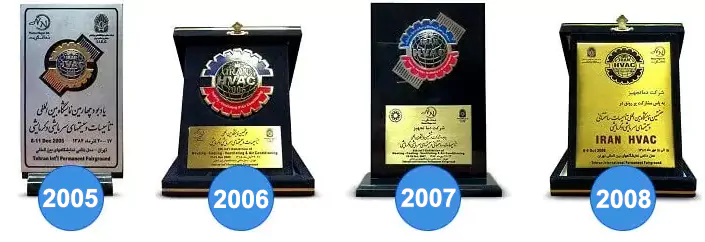
DamaTajhiz HVAC Participation at International HVAC and Construction Facilities Exhibitions Demonstrates its Global Reach and Commitment to the Industry.
We Look Forward to Your Call and the Opportunity to Meet You
SHARE THIS CONTENT TO SPREAD THE KNOWLEDGE
| |
Head Office: No. 463,Talebian Alley,Taleghani St.Tehran,Iran


DamaTajhiz has provided the opportunity to sell and ship specialized HVAC equipment for applicants in the following countries as the first and the most popular online store for selling HVAC equipment (Heating , Ventilation , Cooling , Air conditioning) in the Middle East : Afghanistan – Tajikistan - Uzbekistan – Turkmenistan – Azerbaijan – Armenia – Georgia – Turkey – Iraq – Syria – Jordan – Kuwait – Emirates – Qatar – Oman.


